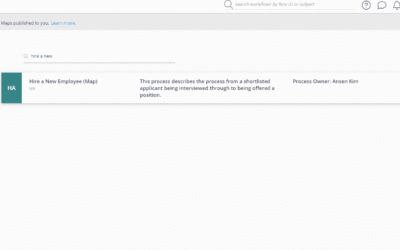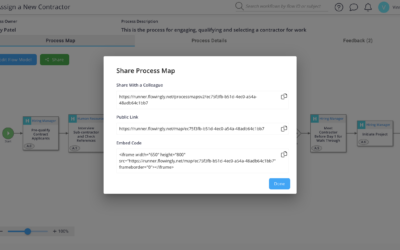This update is all about making connecting to the Microsoft tech stack as simple and easy as possible since Power Automate is the world’s most used integration platform.

Process Optimisation: The Case For Automation First vs. Mapping First
Process Optimisation: The Case For Automation First vs. Mapping First
The question of process mapping vs process automation comes up all the time when figuring out how to tackle a business process problem. Do you start with a process mapping project? Does automation feel like a next step? What is it you really want to change for your organisation?
In our recent webinar, Jemma discussed how her team at Glenelg Shire Council tackled these questions. Watch the 3 min video snippet below (or read the transcript)
Transcript
We had a whole raft of projects that we were launching over the next 5 years. The biggest things for us for automation were:
- Process knowledge existing only in the brains of staff, which is a huge organisational risk.
- Building on that, at council we have cupboards full of well intentioned procedures and maps that we create and then immediately start to diverge from
- And primarlily, customer experience.
So we’re a large square km, low population Local Government Authority. Giving every staff and community member the same customer experience when interacting with us was so important. It’s also important to note that we started this project pre-covid, but all of this was obviously reinforced by the pandemic, so it’s aligned really closely to our pandemic response.
Q: A lot of Local Governments go down that path of process mapping as well, and automation almost seems like a step too far or a futuristic piece. Why was it that you went down a different path there? I know you’ve mapped processes before, but why have you tackled this problem with Automation at the forefront?
For me it was about delivering a tangible benefit to our organisation that can be understood by all levels of our organisation.
When the project team or transformation team was brought on board by Digital Glenelg, we inherited a whole bunch of process maps, great work that people prior to us in the organisation had done.
What we found is that when you went talk to staff about them, that experience of what they did currently was different., So I really wanted this project to be something live, that didn’t require project artefacts to be kept off to the side,.
Right from the get go when asking for resource from the organisation, I really wanted to be able to say “If you give X to this project then we’ll deliver Y” .
For the “Delivery of Y”, I use the ASOS example. When you buy something from ASOS, you get a notification that your order has been selected, packed, pickjed and then it goes off to Australia Post. Then you get all those communitactions; it’s being shipped, it’s out for delivery today, it has been delivered.
So for us it was about procuring a product that sent those notifications out for us; it was about “the postie should be delivering the mail”, not stopping to call people to tell them their mail was coming today. That for me, was where I saw the value for our organisation of this project.
The Flowingly Blog
Get the flow-down on all things Flowingly. From process tips to product, we cover everything you need to level up your processes.
Flowingly Product Update – Power Automate Connector
Flowingly – March Release Notes
Discover the latest enhancements and bug fixes in Flowingly with our March Release Notes blog! We’re excited to share all the updates that went live last month to improve your experience with our platform.
Flowingly Product Update – Process Map Sharing
Sharing your process maps has never been easier, whether it’s with your team, externally with partners, suppliers or contractors, or embedded on external websites.


